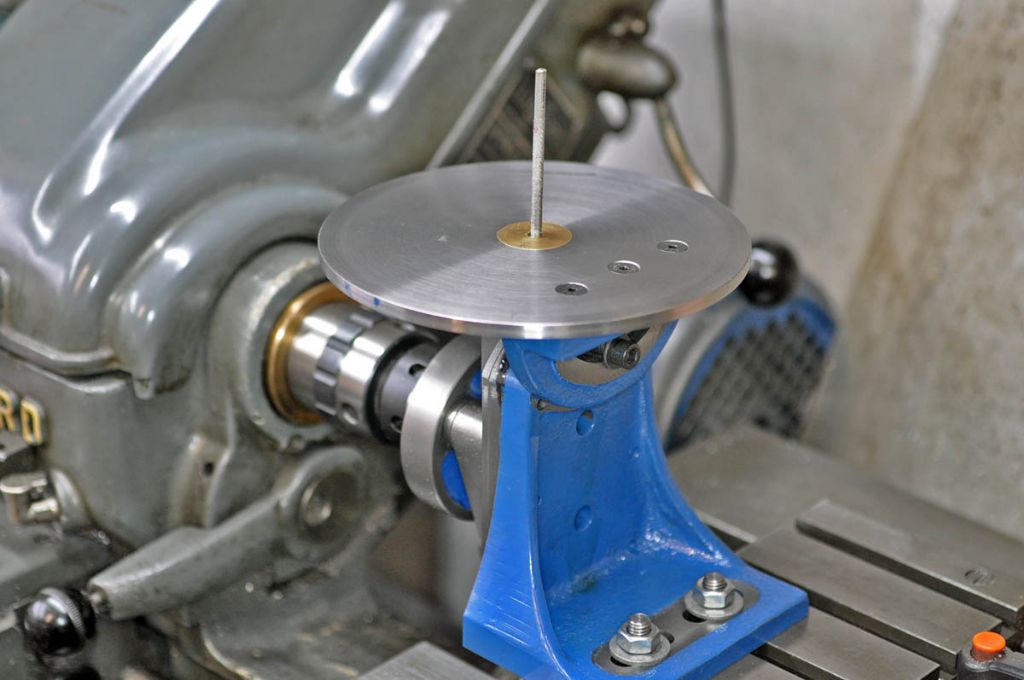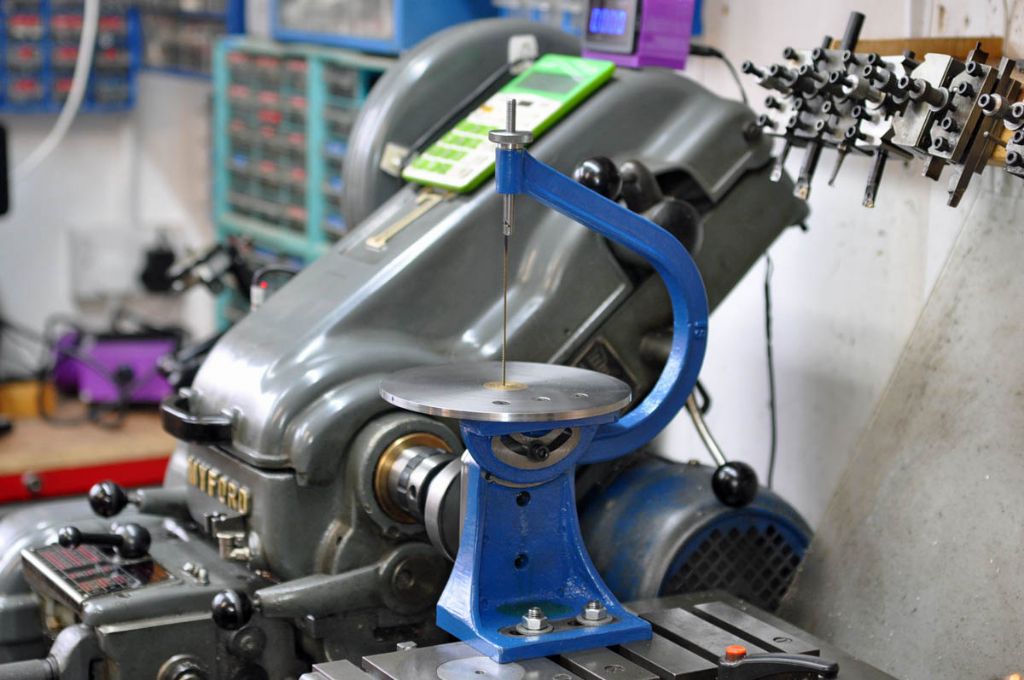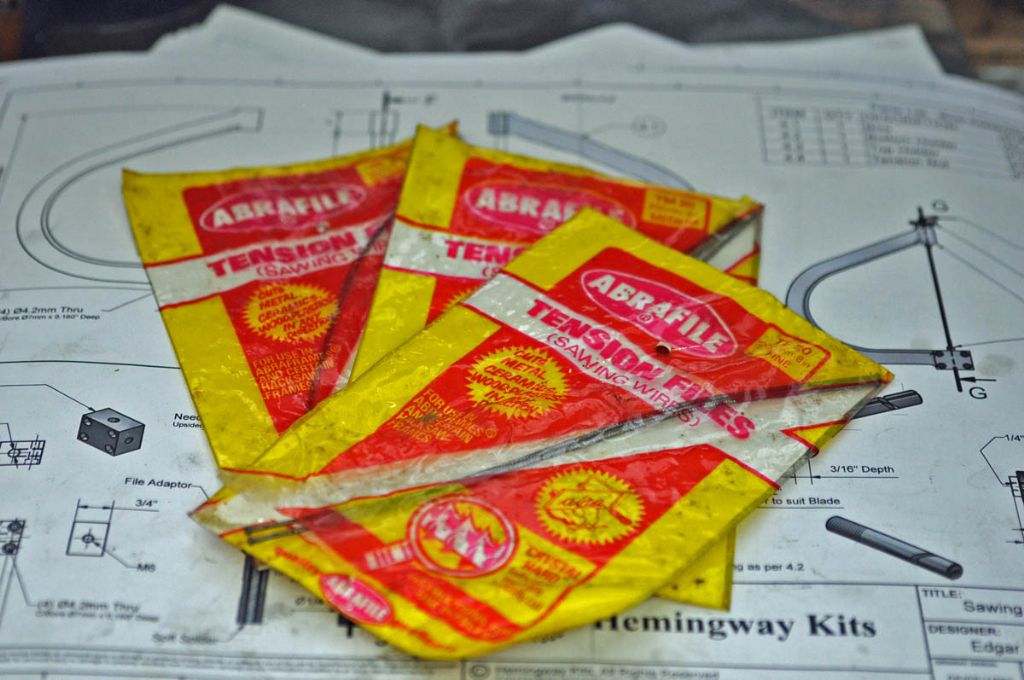Zan, first I turned an outer rim from 1/2" wall tube with a 0.25mm step on the inner face


I then turned the inner rim from the piece of 1" wall tube to fit inside the outer ring. I was able to part off the piece I needed and save the other bit for something else, left the last 0.5mm of wall to cut with a hacksaw


The inner rim was then drilled 9mm for the small end of the spokes and countersunk

The hub was turned from 35mm stock, rough drilled 10mm and then drilled and tapped M4 with a counterbore for the larger 10mm dia ends of the spokes

Spokes were from 10mm dia stock, faced to length, ctr drilled and the ends tapped M4 (hub) and M5 (rim) before reducing one end to 9mm dia and finally taper turned

I got carried away and did not take an assembly photo but basically the inner rim was held in the 4-jaw, spokes slipped into the holes, hub then supported on a bit of 10mm rod held in the tailstock chuck.
M4 studding in the ends of the spokes allows them to be screwed up to the bottom of the hub counterbores with a smear of JBWeld. M5 csk socket screws then screw into the other end of the spokes and seat against the csk holes. Final hub position can be adjusted by how tight these screws are done up – a bit like truing a bike wheel. Smear of JBWeld on this joint too

The two rims were then slid together with the step previously turned ensuring the inner ring is sitting true and equal about mid point of the outer rim. Loctite used for this joint. Doing it with the inner and outer rim allows all the holes to be hidden.
Once set back in the 4-jaw for a final skim and bore hub to final size, then broach keyway. I still have to add a small fillet of filler around all the joints for that "cast" look



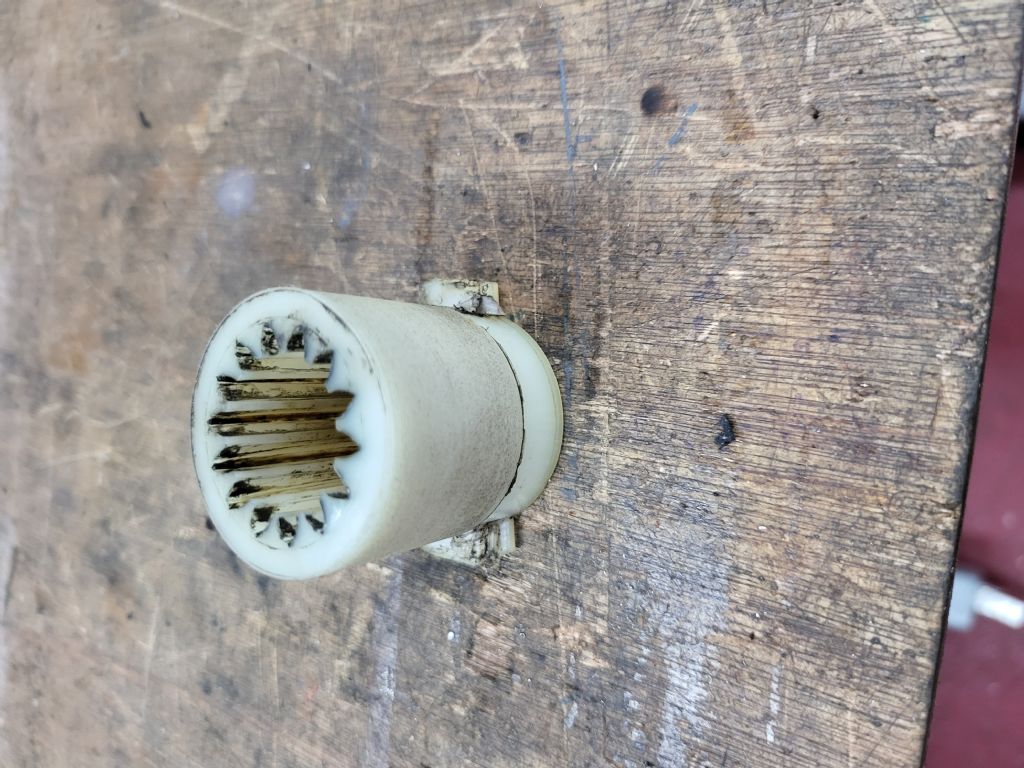
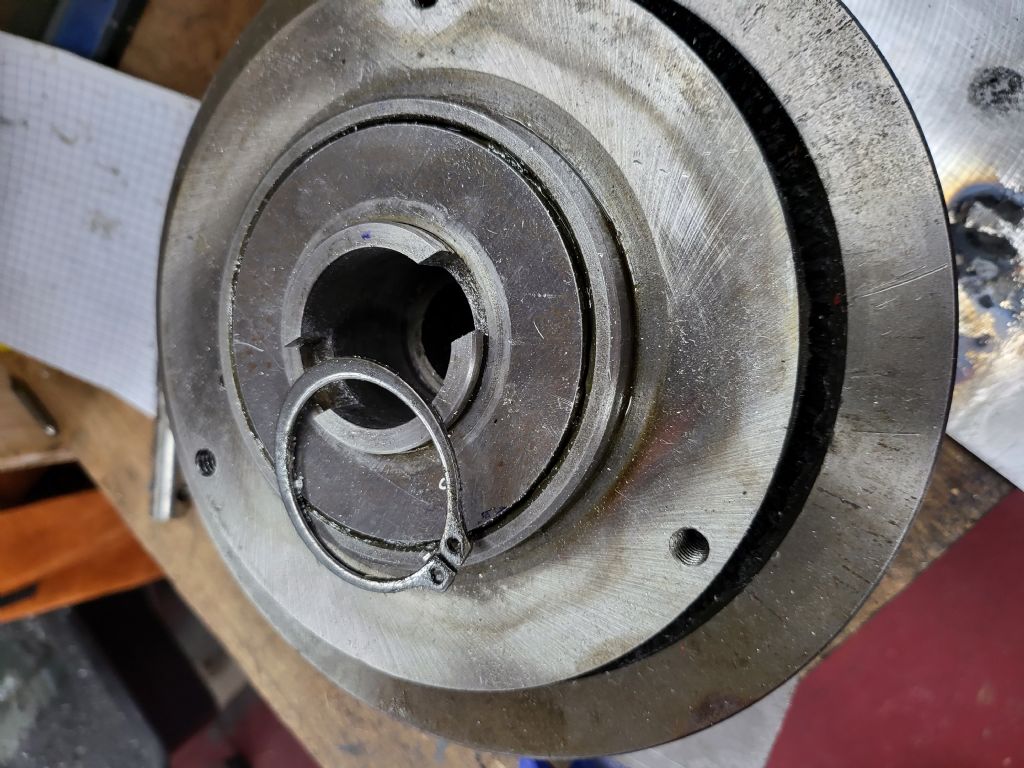
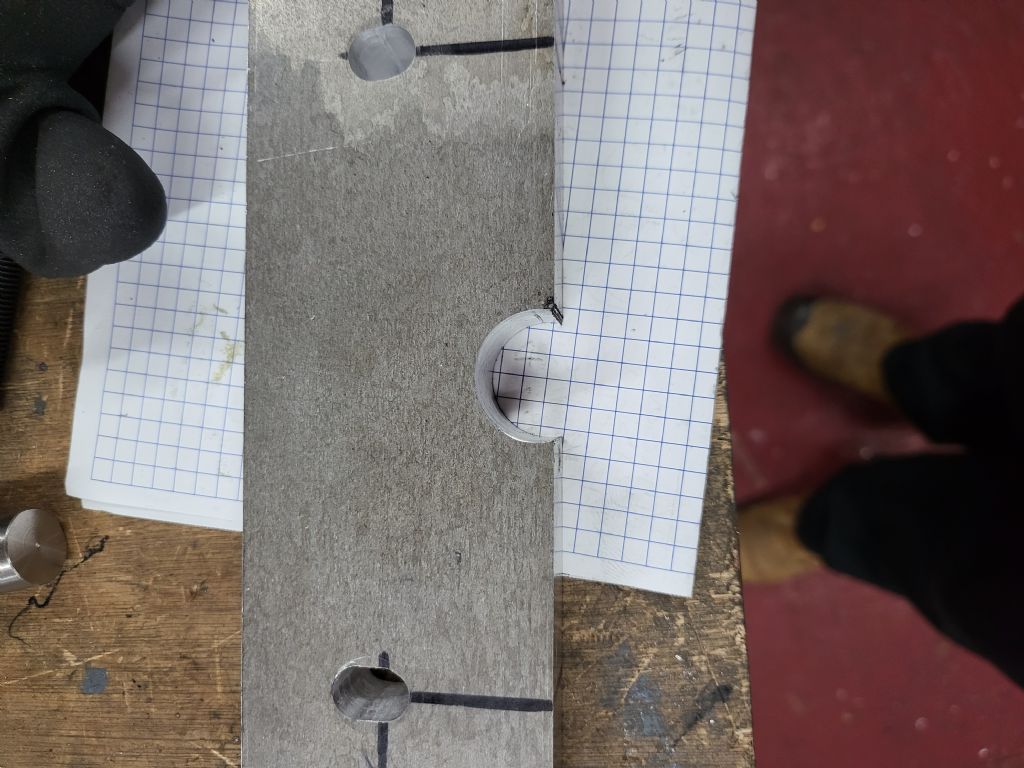
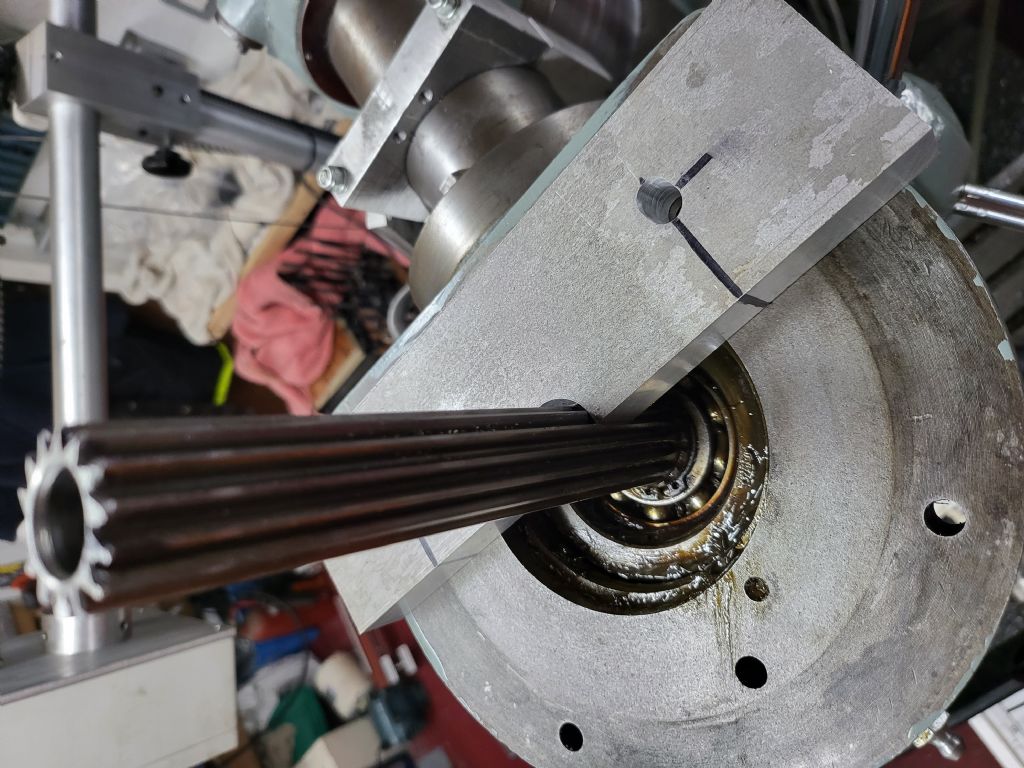


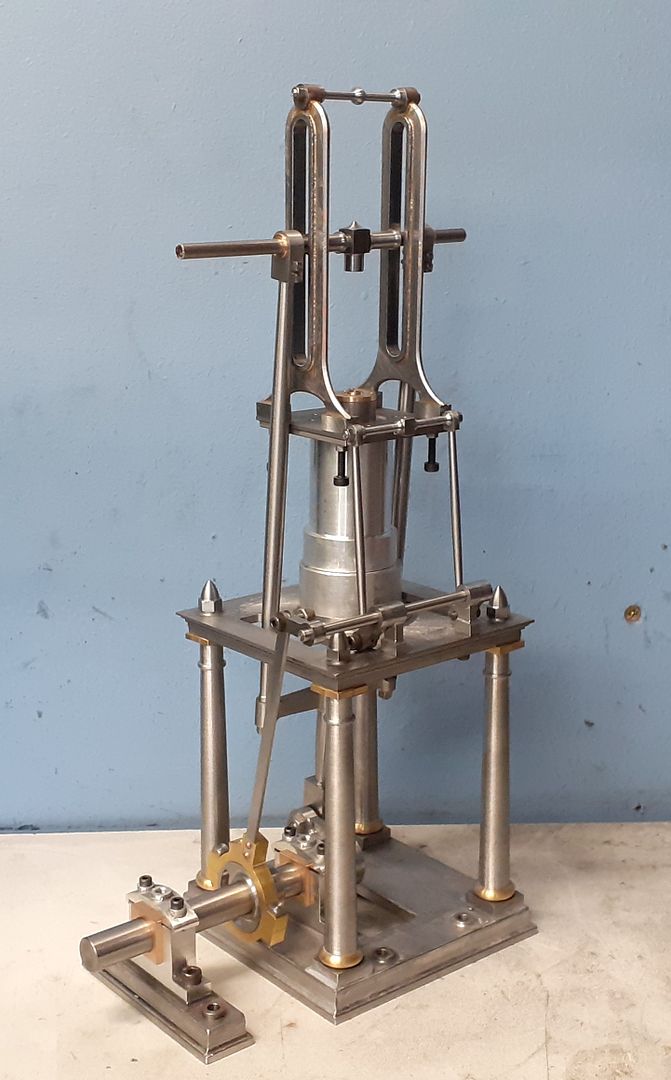
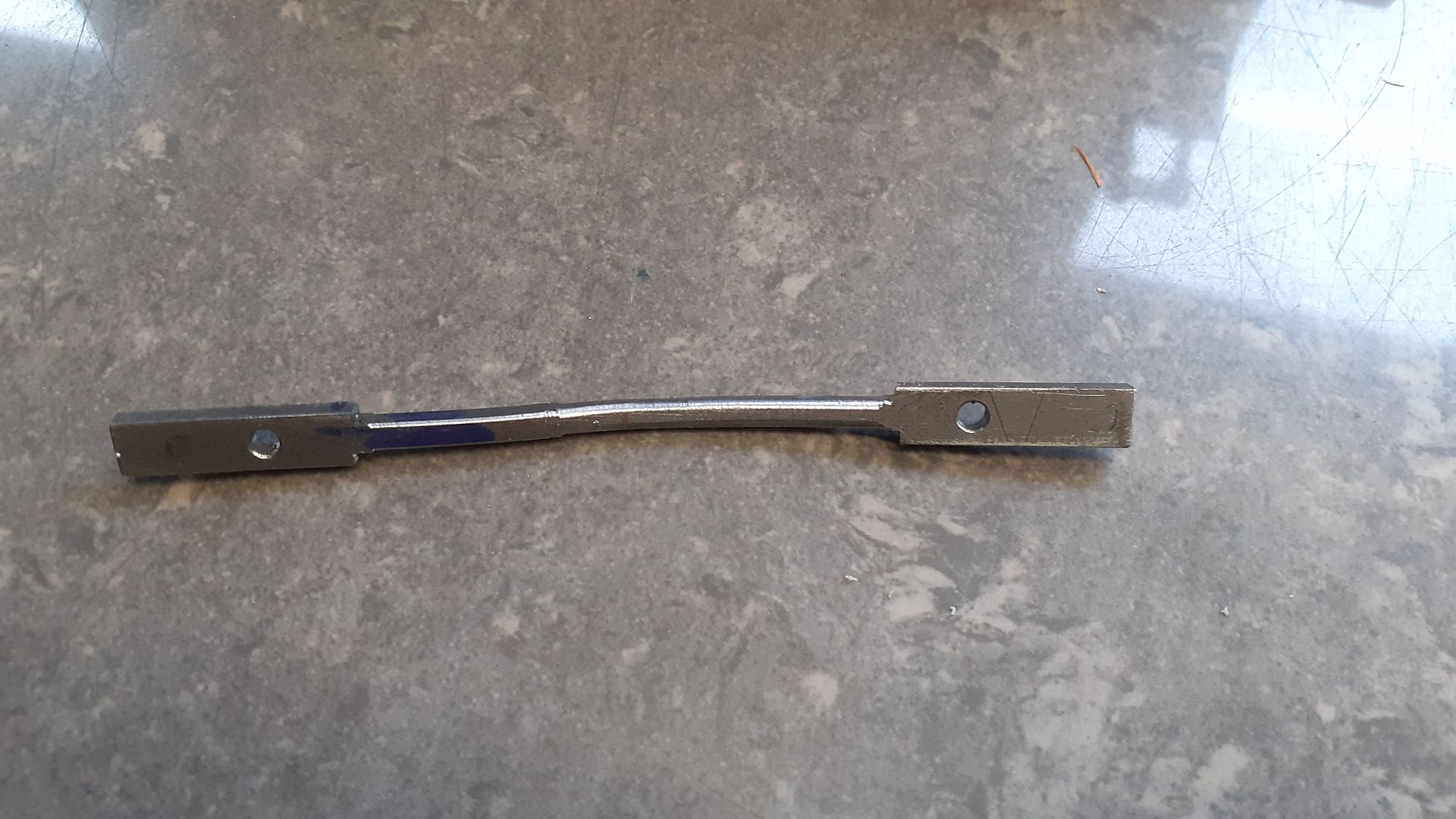
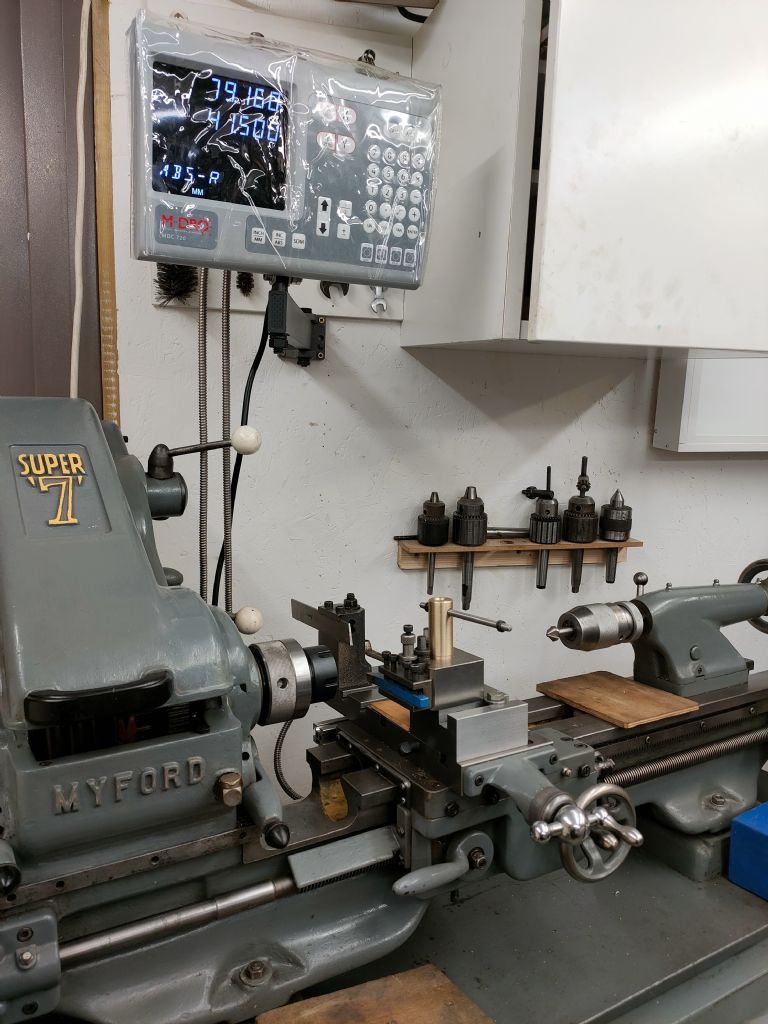
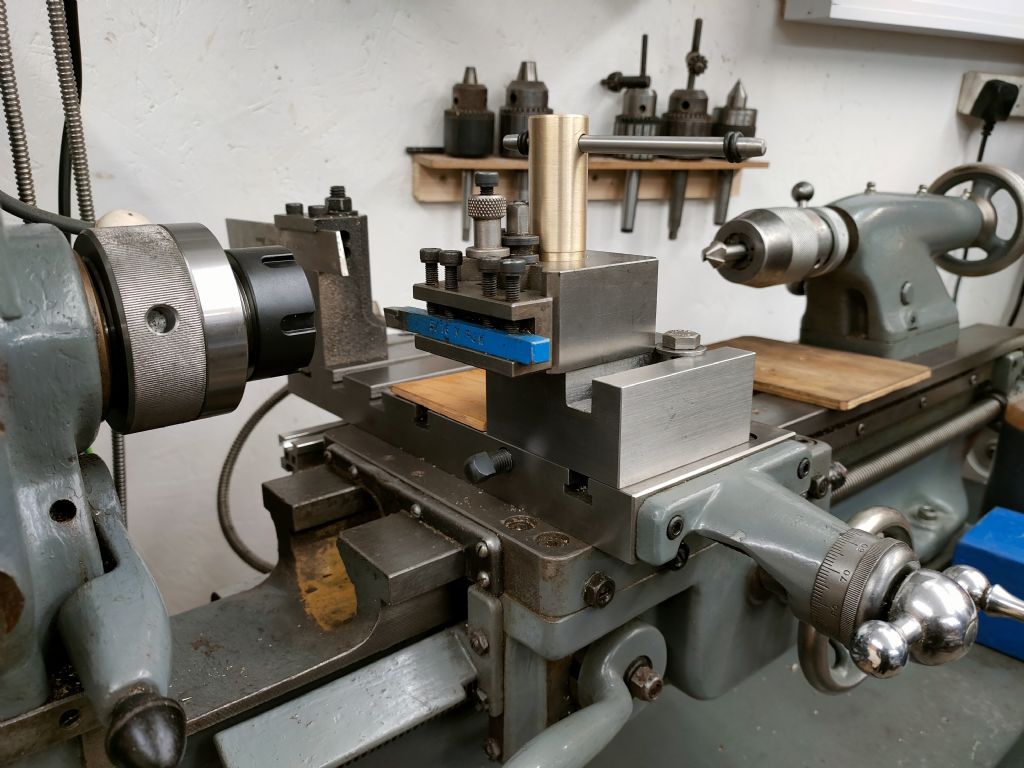
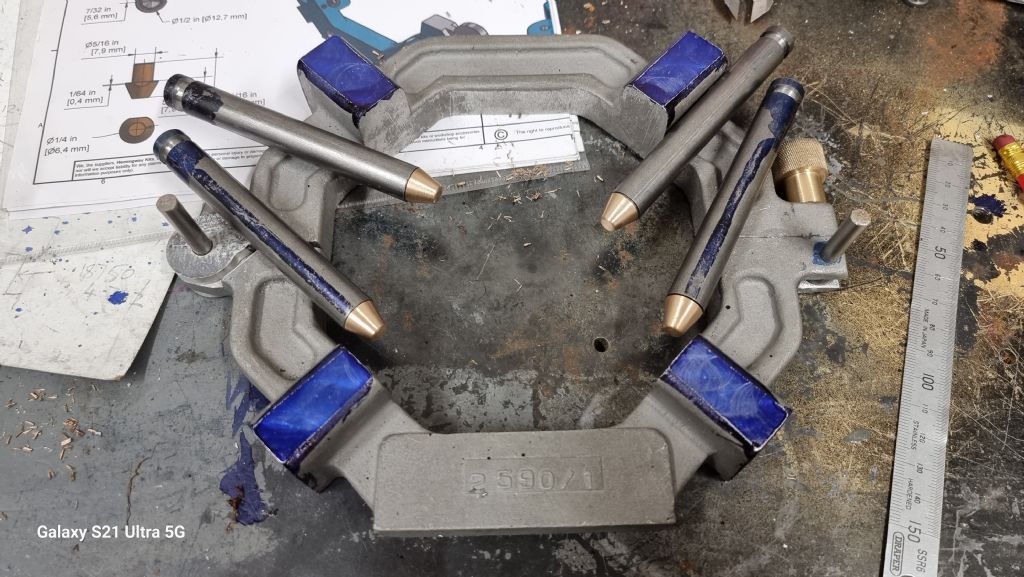

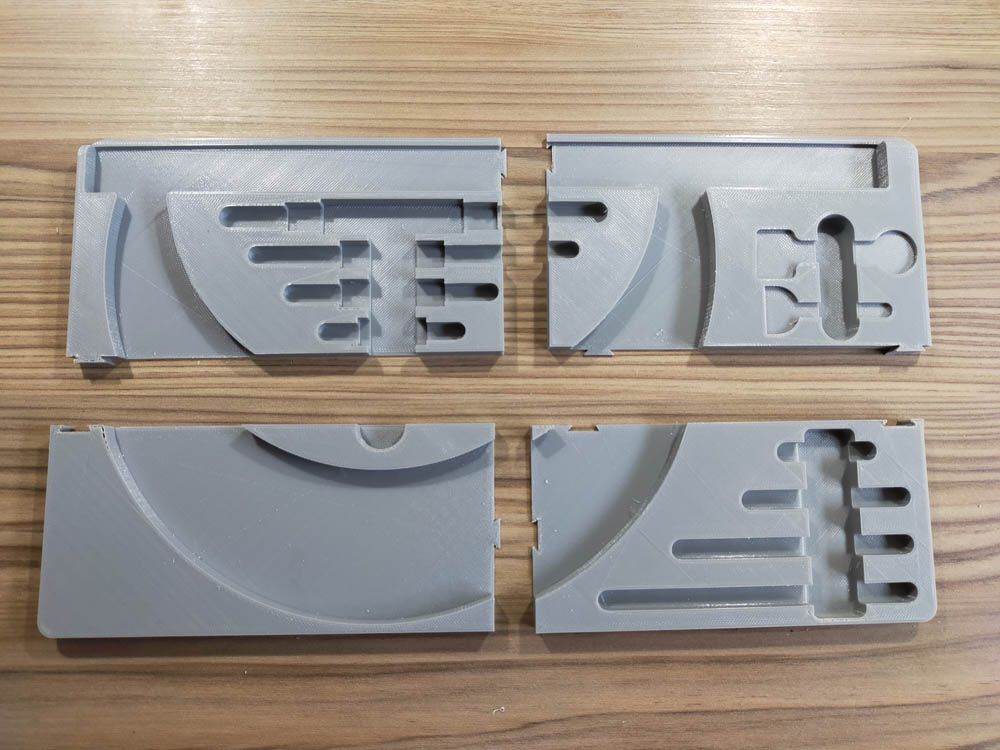
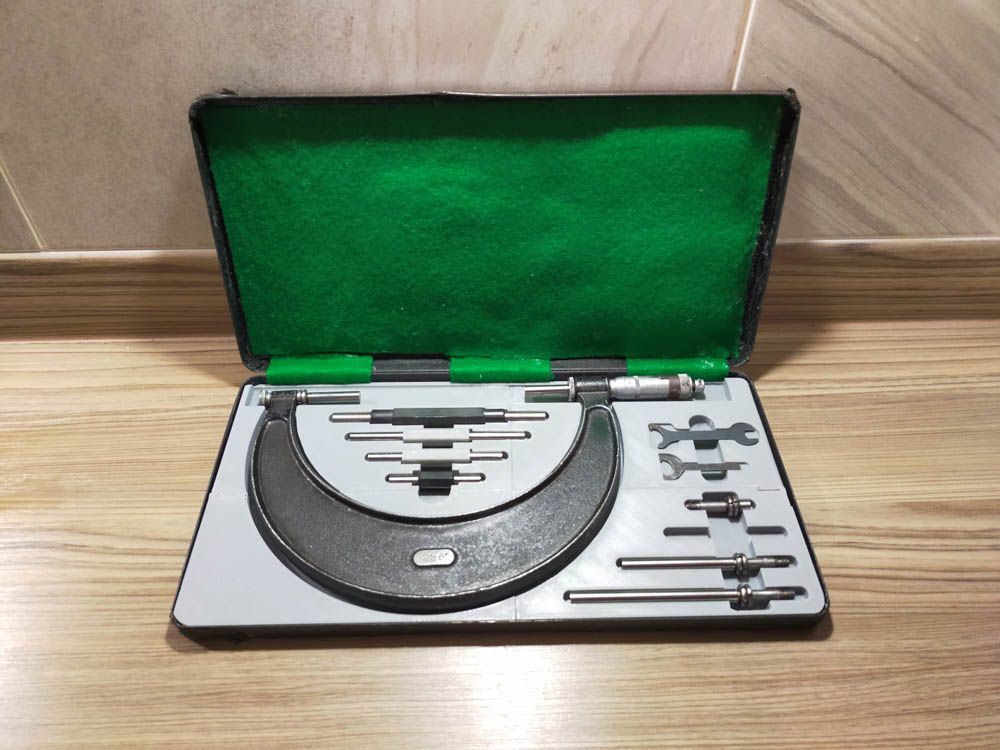
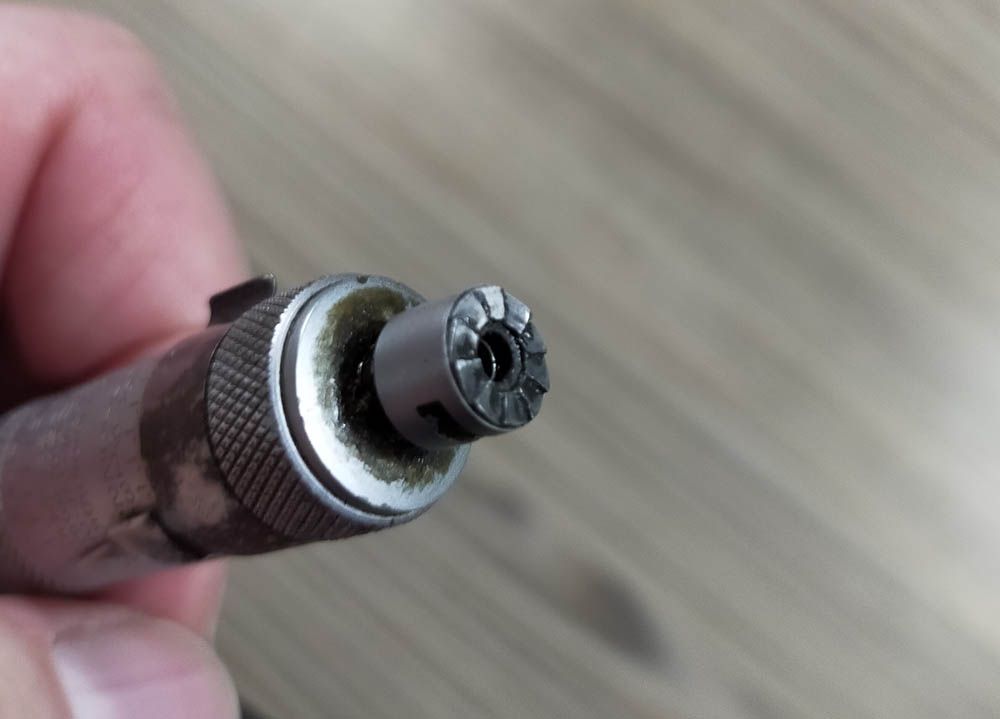
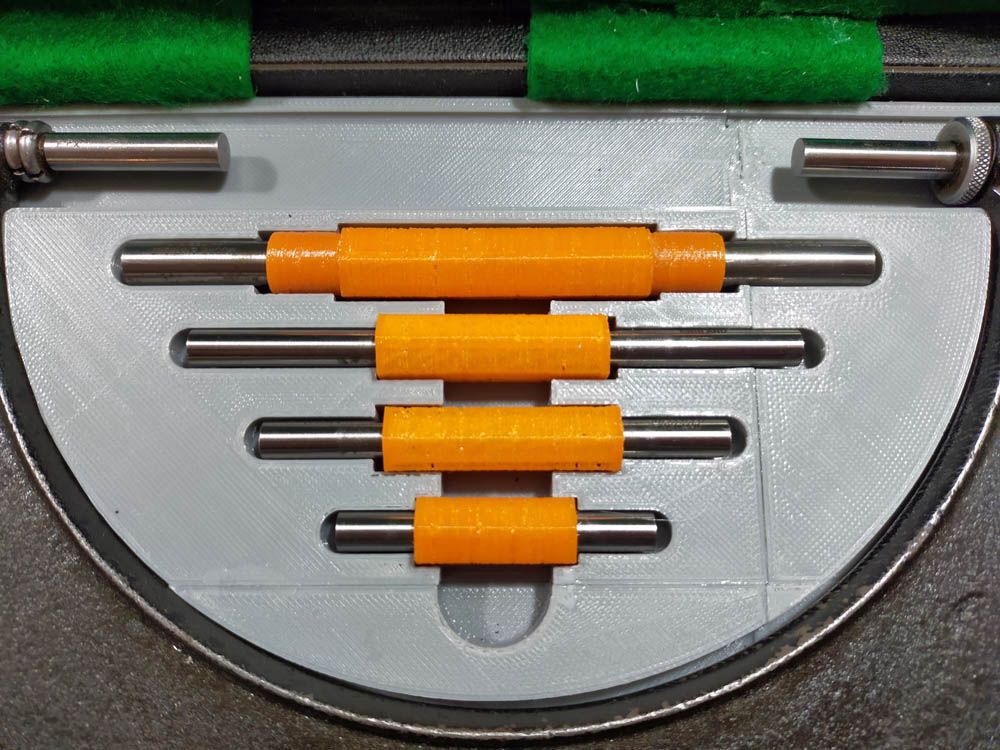
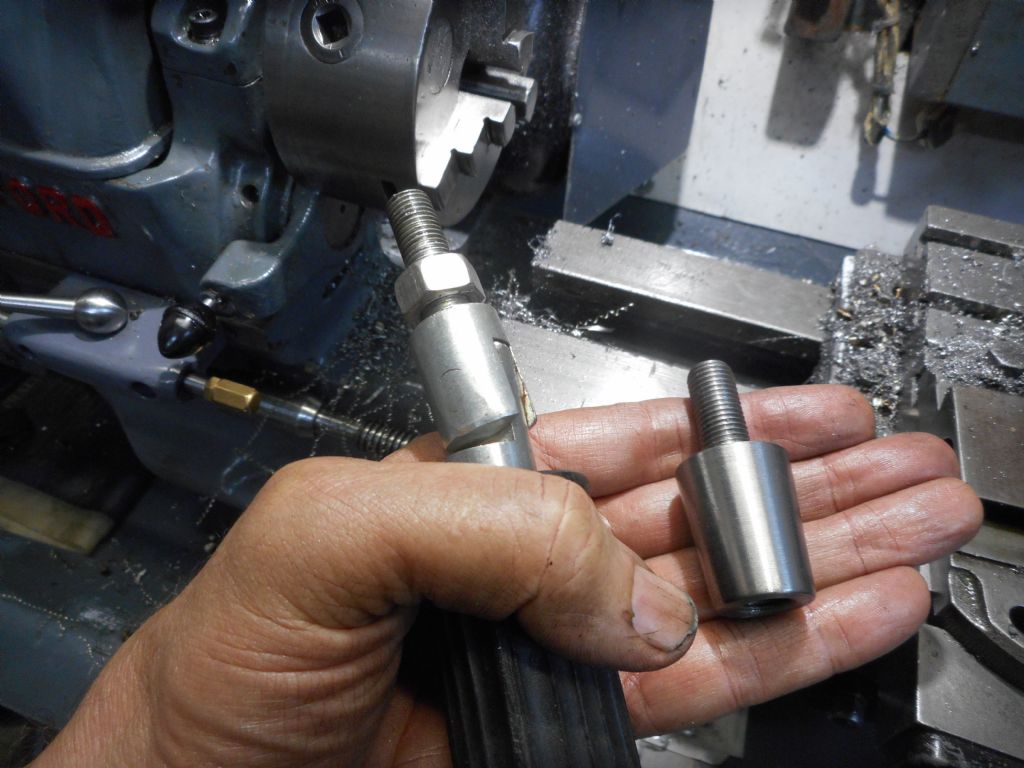
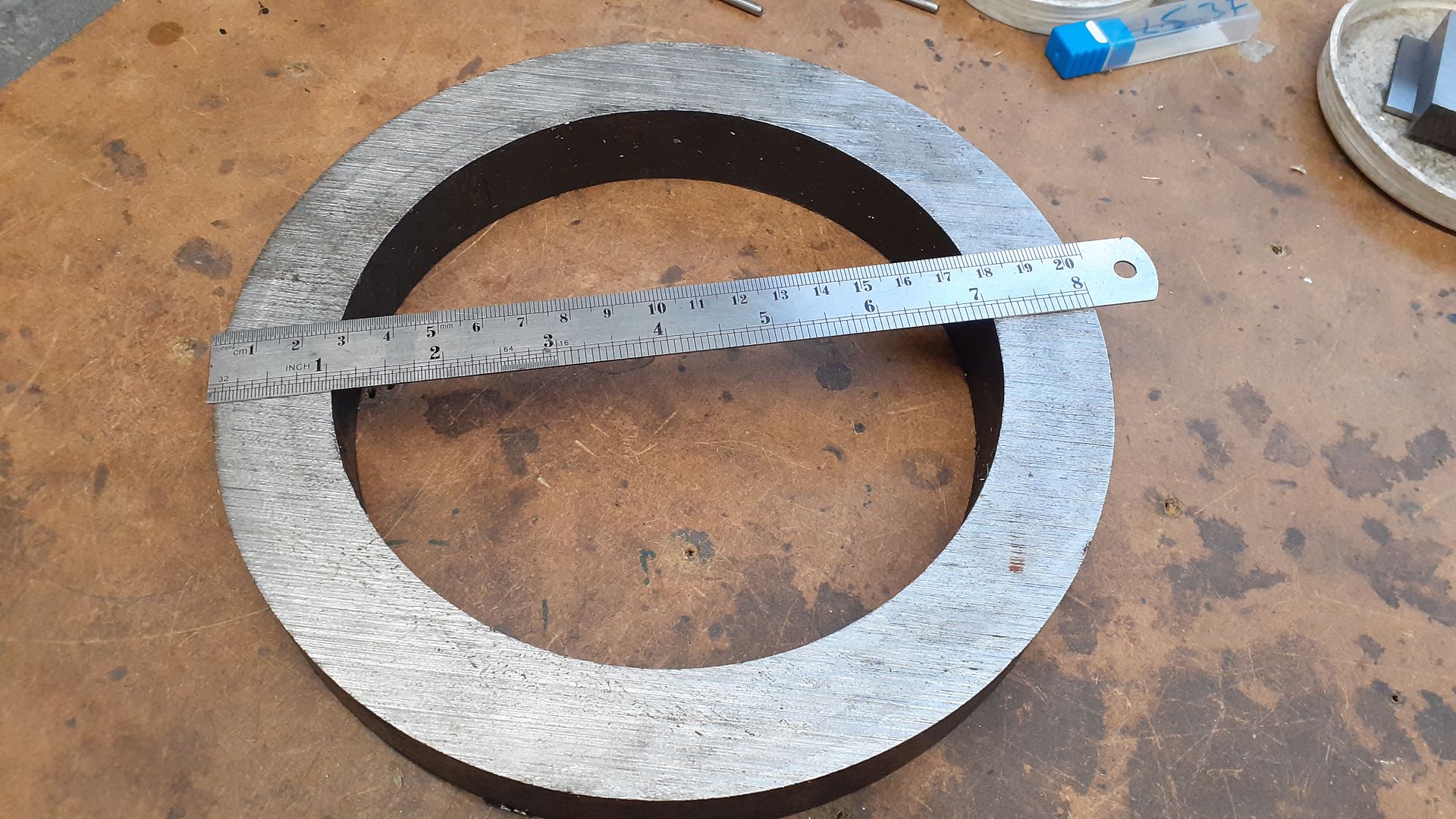
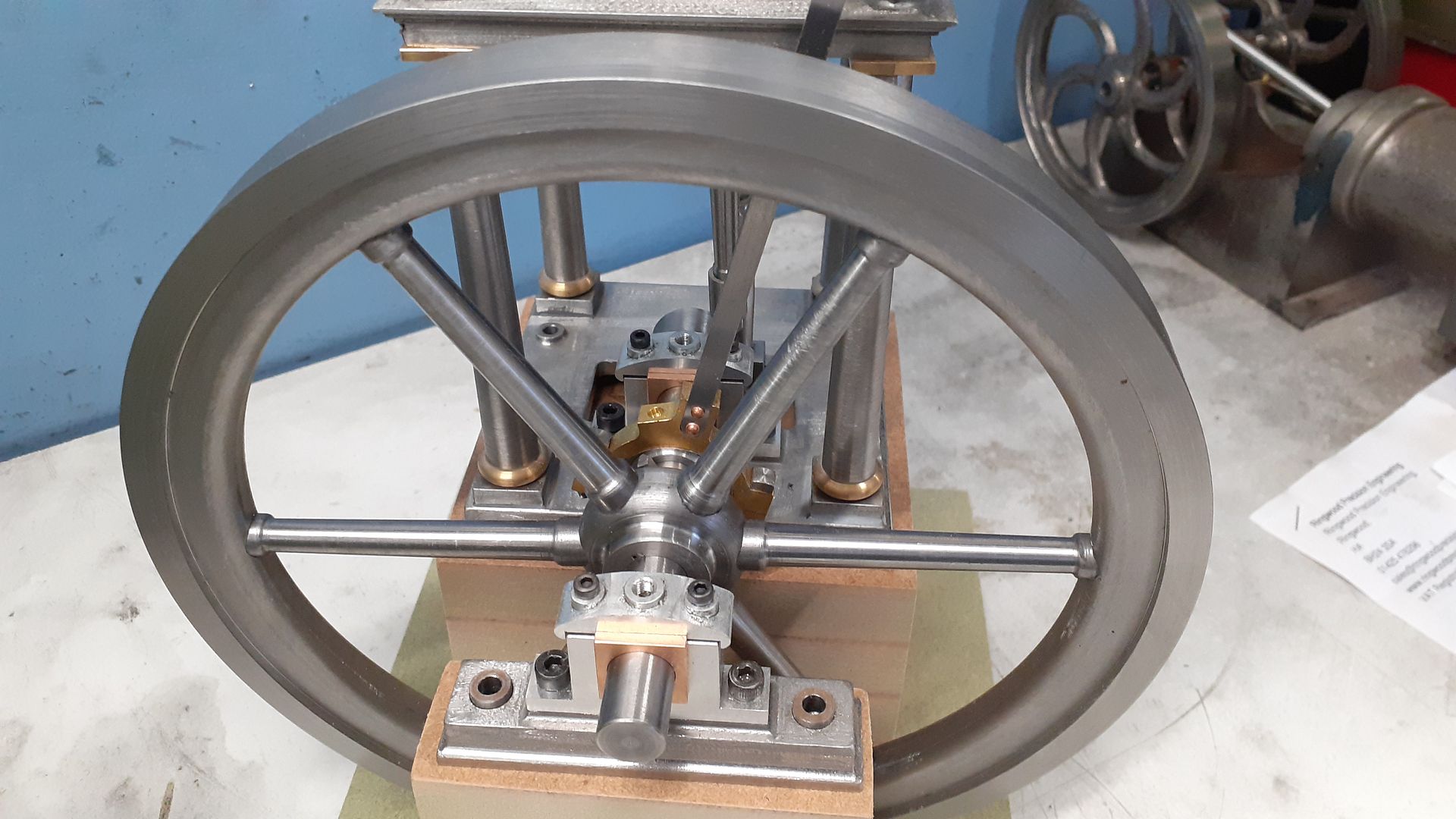
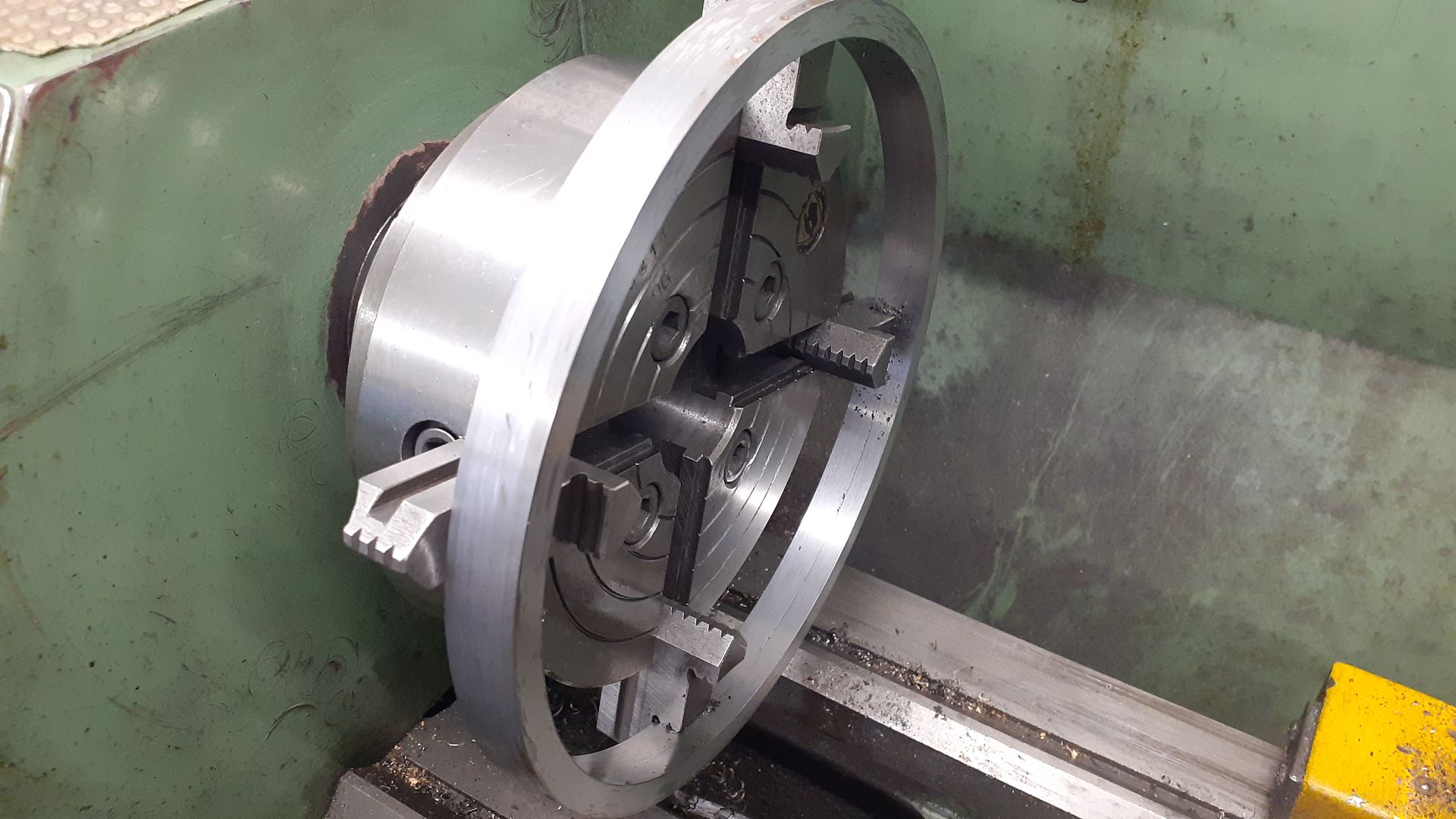
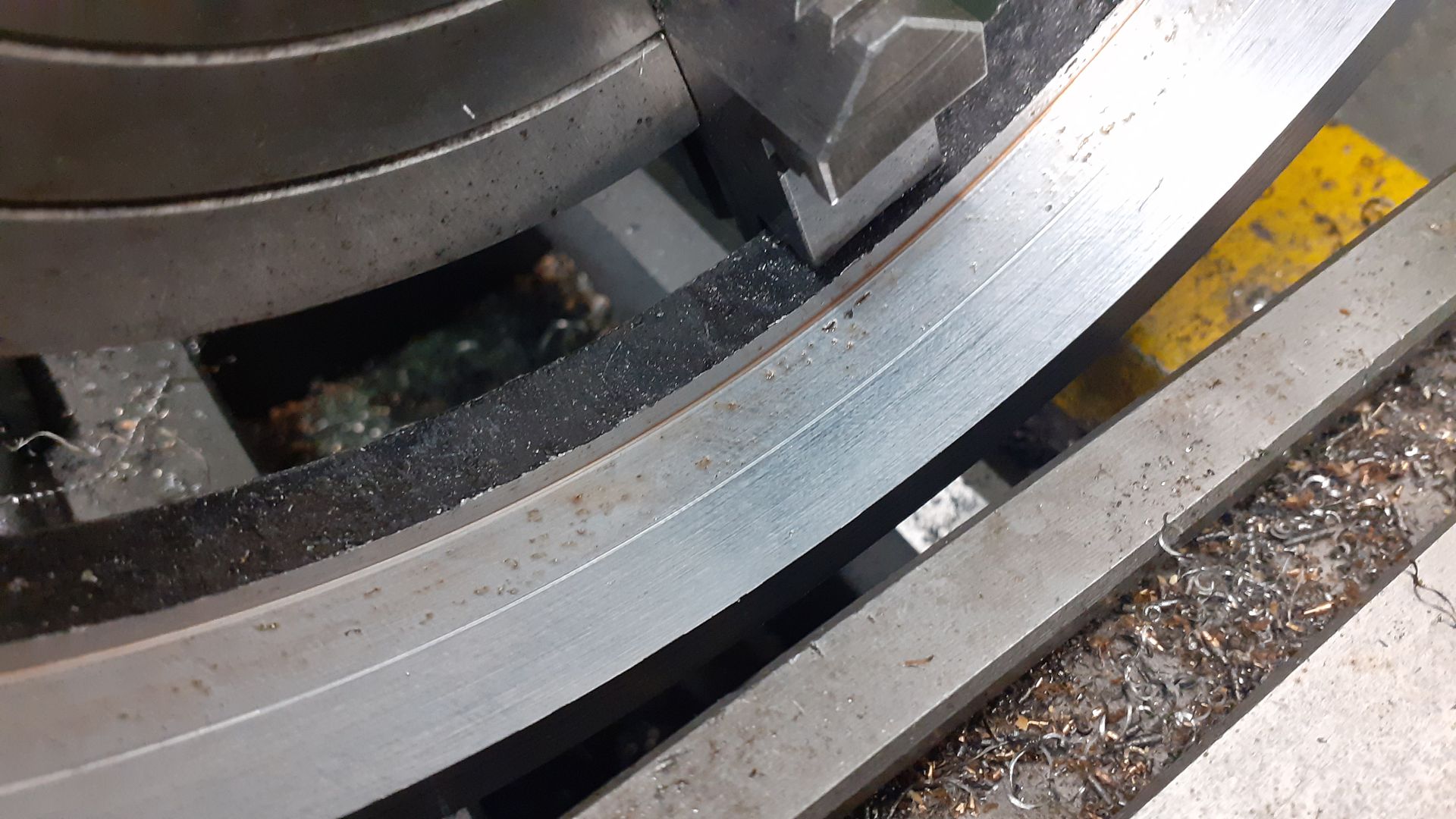
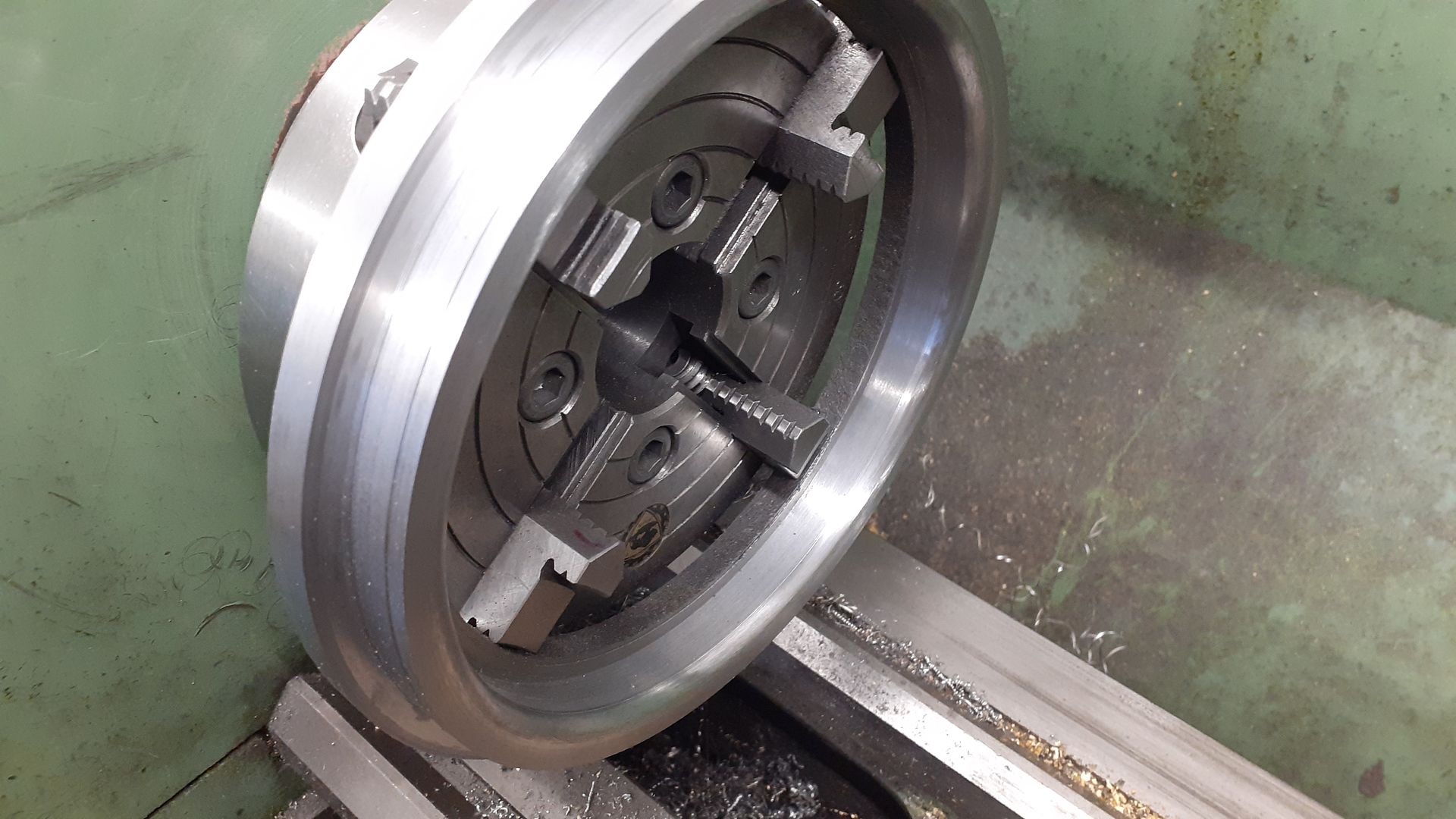
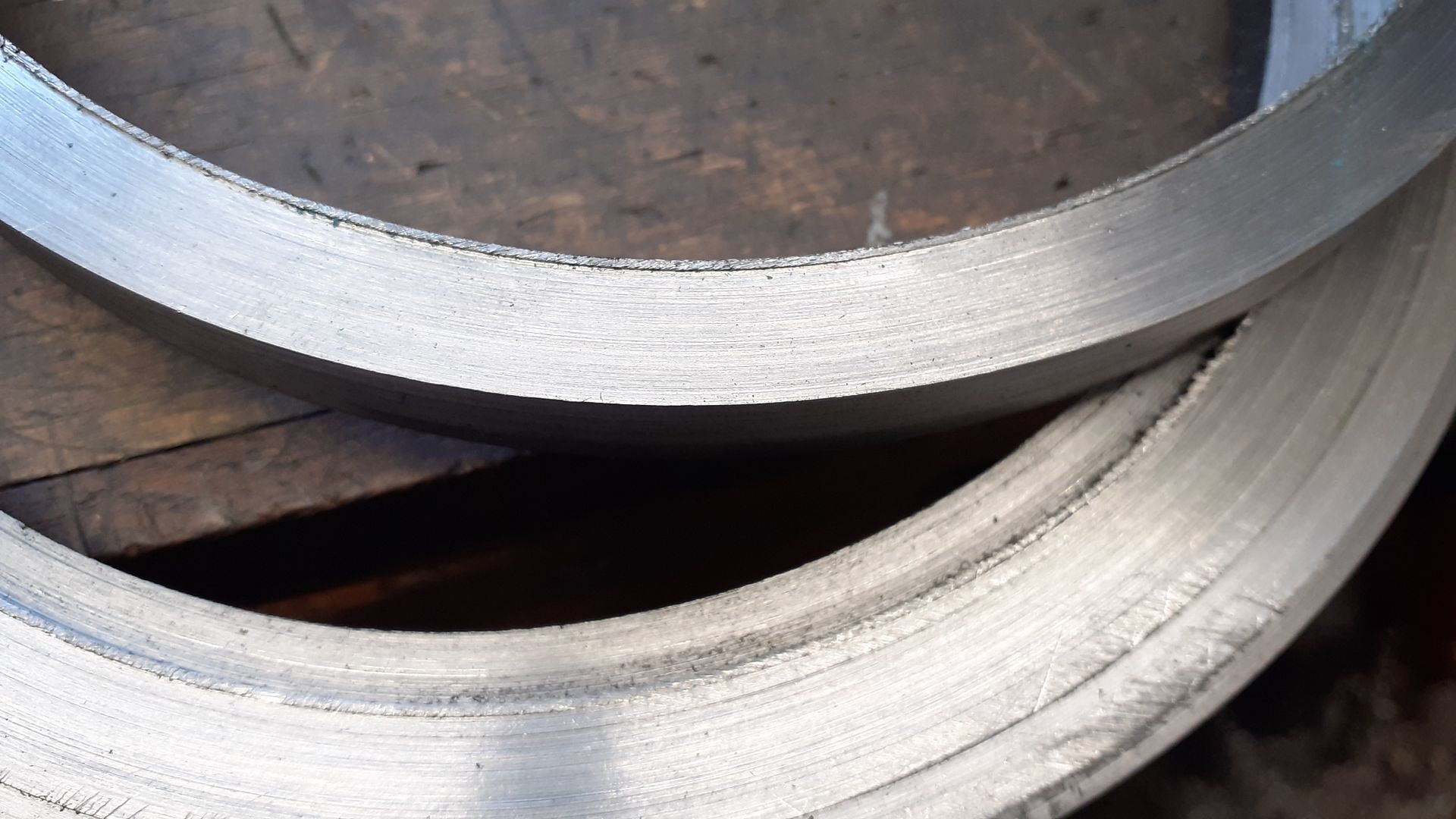
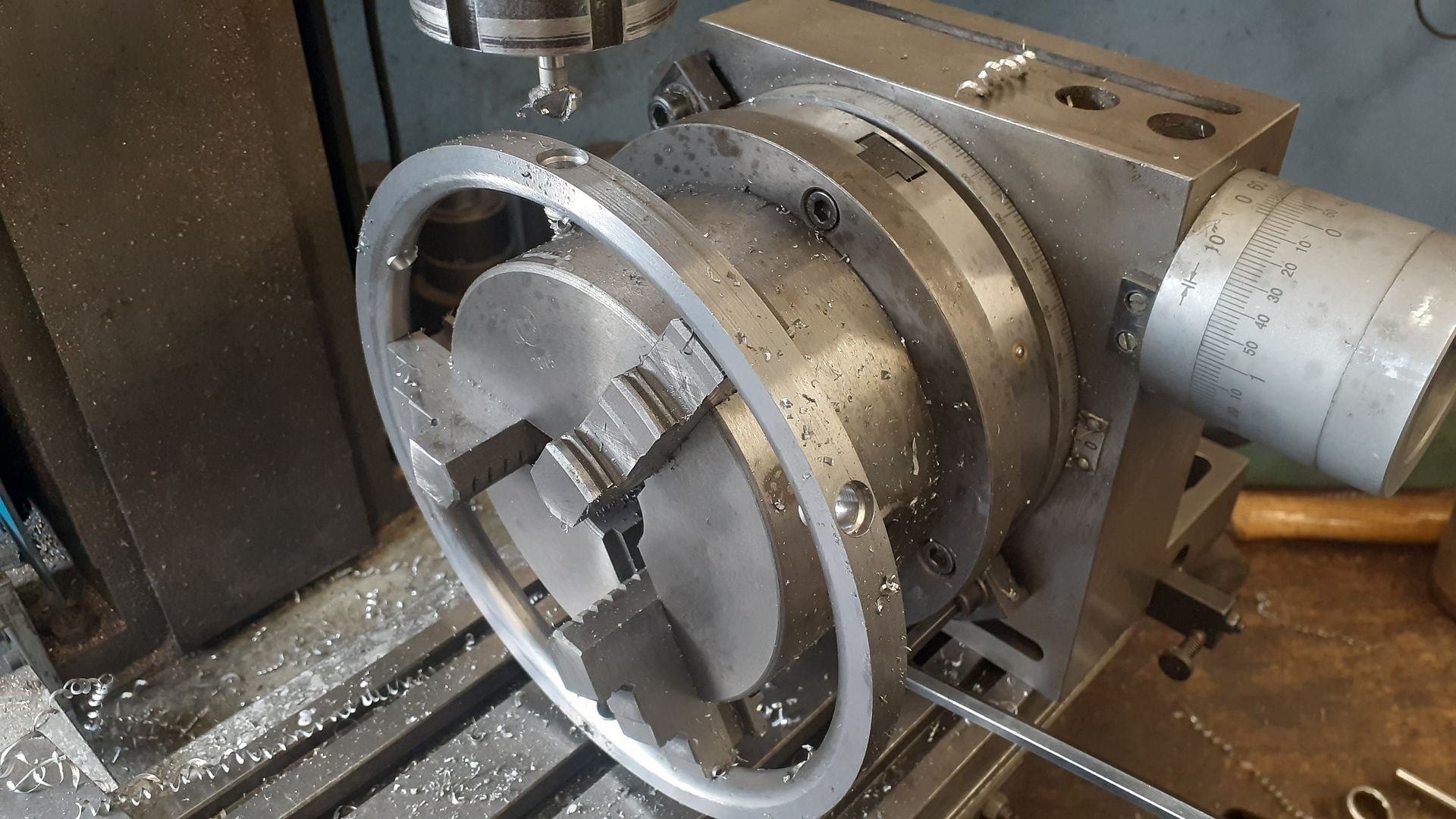
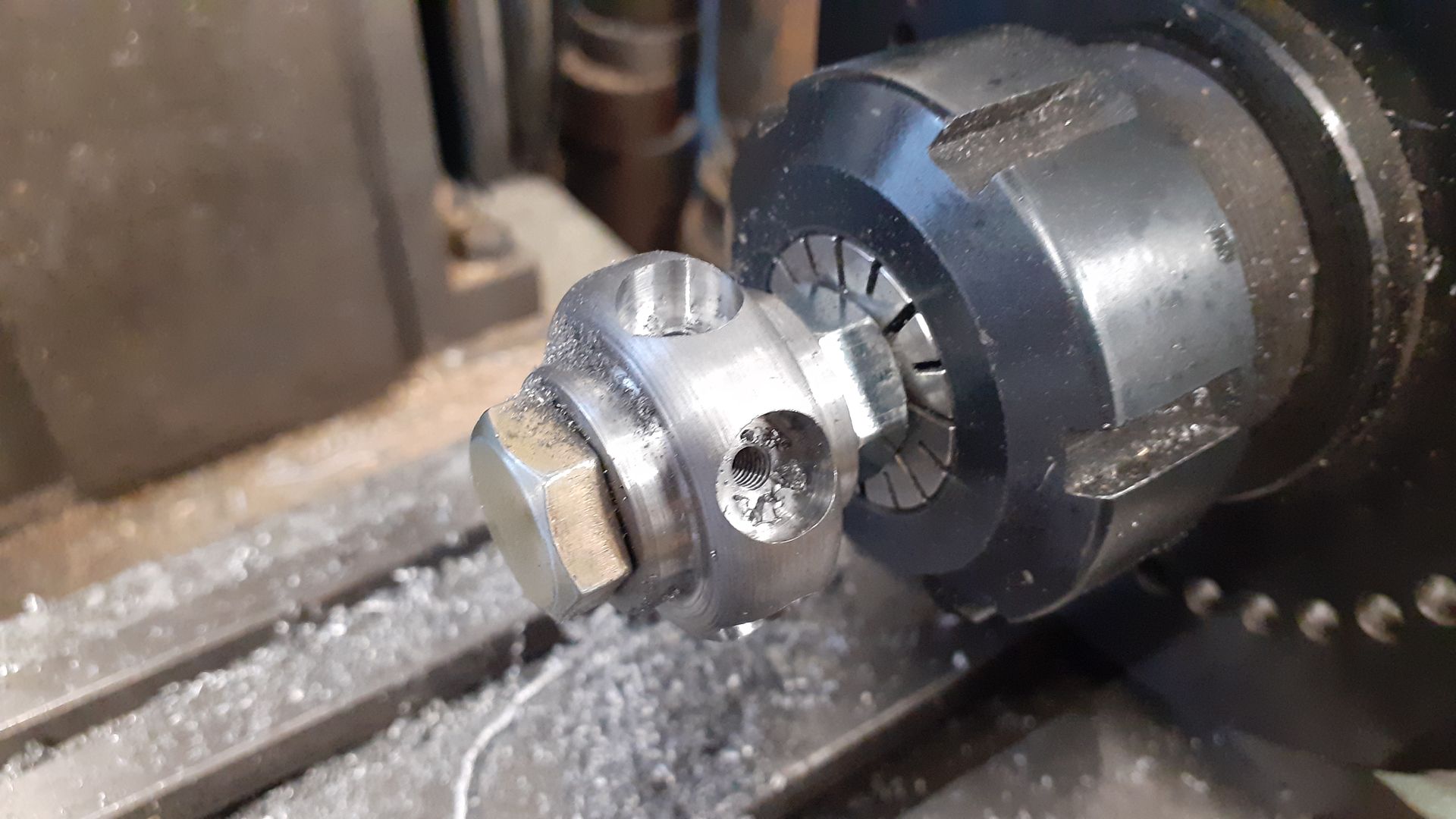

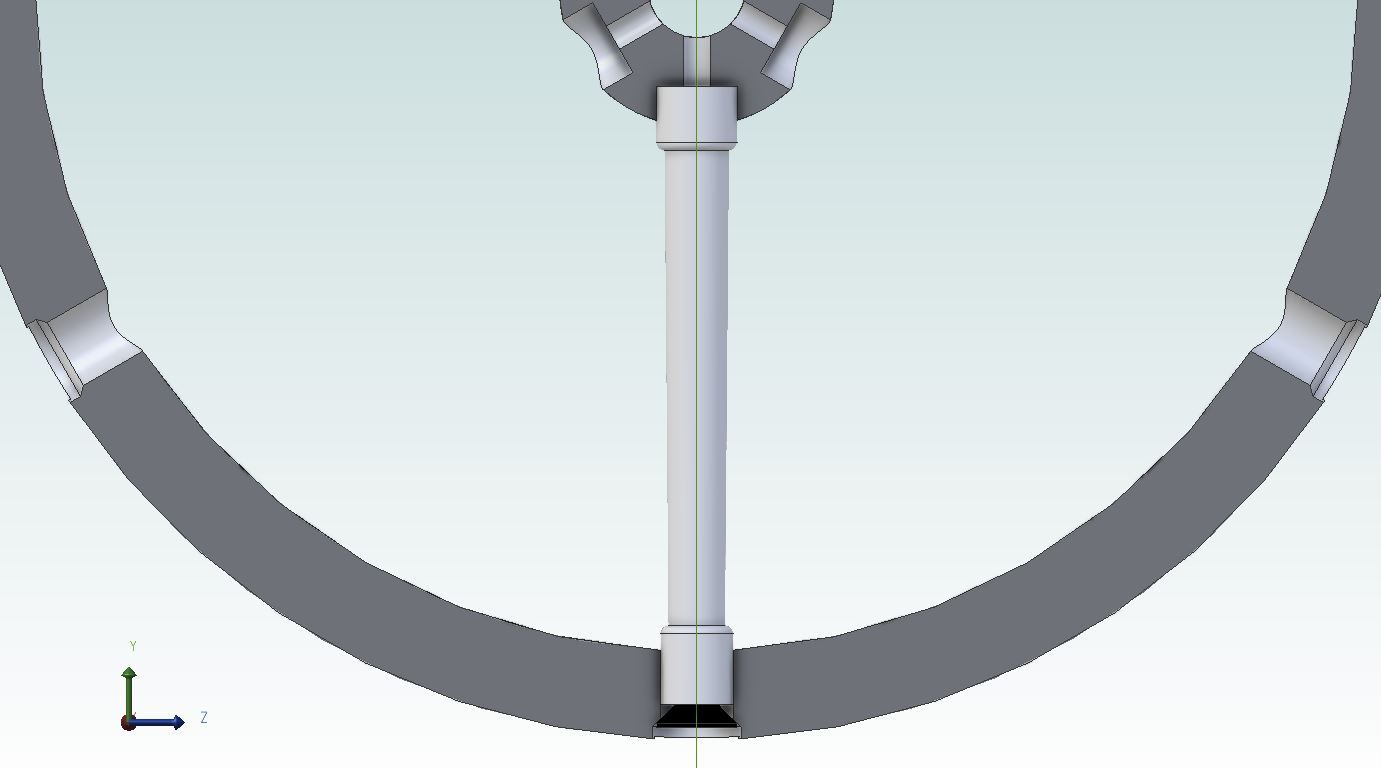
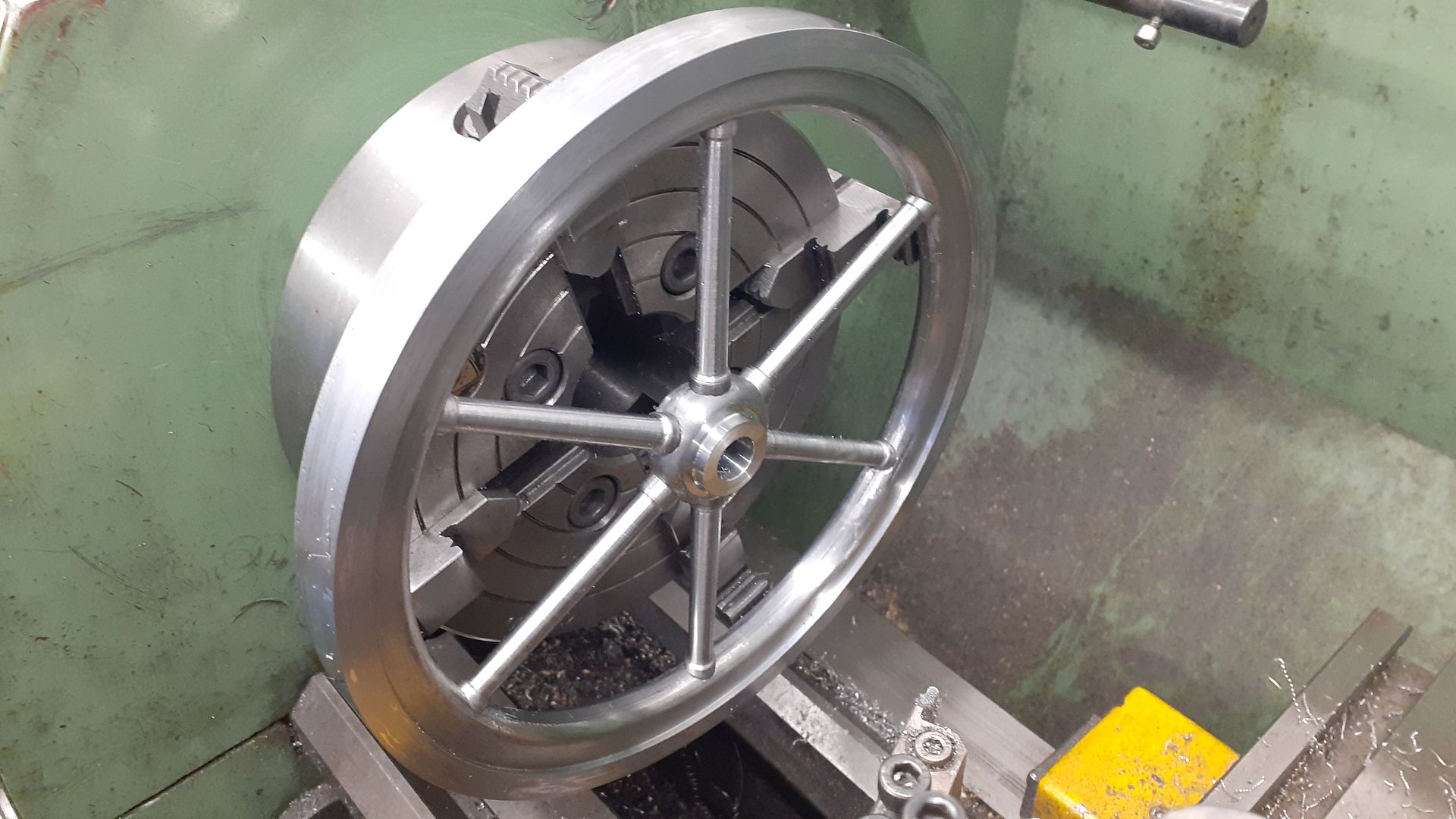
![20230214_191921[1].jpg 20230214_191921[1].jpg](/wp-content/uploads/sites/4/images/member_albums/44290/920447.jpg)
